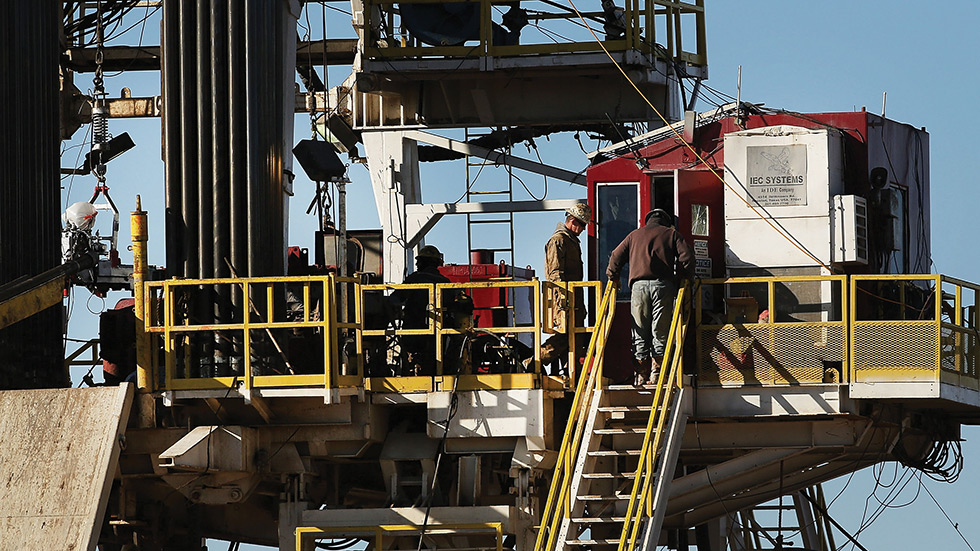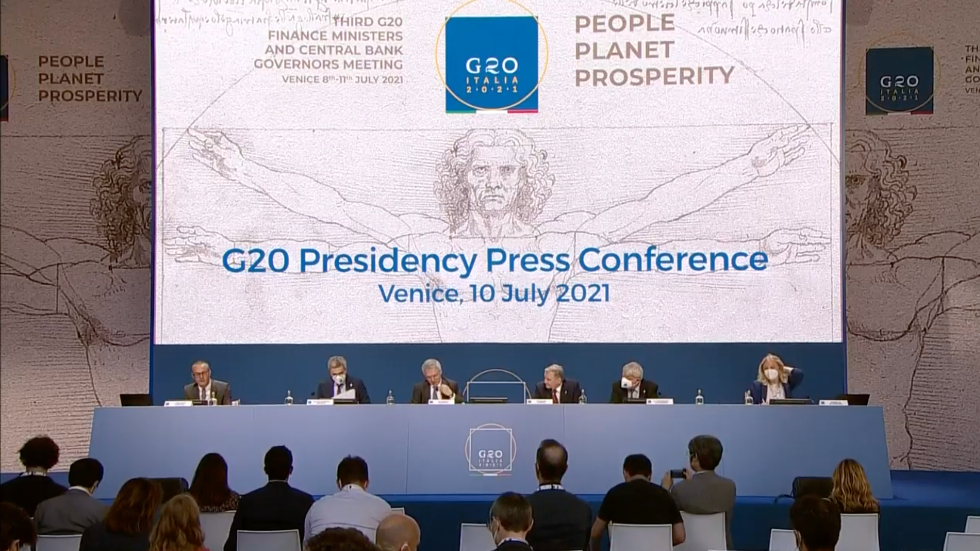Equilibrium/Sustainability — Did COVID-19 leak from labs or bats? Researchers say we’ll likely never know

Today is Monday. Welcome to Equilibrium, a newsletter that tracks the growing global battle over the future of sustainability. Subscribe here: digital-stage.thehill.com/newsletter-signup.
The origins of the ongoing coronavirus pandemic may never be clear, scientists are warning.
Scientists suspect that severe acute respiratory syndrome (SARS), another coronavirus that killed 800 people in 2002, originated in bats. However, “there is still no smoking gun,” Linfa Wang of Duke University, a Singapore-based bat expert, told The Wall Street Journal. “We have never found a bat that is the source of SARS that humans have.”
That bodes poorly for attempts to identify an unequivocal source for SARS-CoV-2 — the coronavirus that causes COVID-19 — Wang explained, particularly when combined with political obstacles. “No one wants you to find a virus in their country,” he said. That, plus the slow speed of scientific consensus, means it may be years before we know if the coronavirus pandemic came from a lab leak or natural infection, Amy Dockser Marcus reported for the Journal.
We’re looking at two other sources of uncertainty today: What toxins are left by fracking and can a global financial system be built that boosts sustainable technology as a prime feature, rather than an afterthought.
For Equilibrium, we are Saul Elbein and Sharon Udasin. Please send tips or comments to Saul at selbein@digital-stage.thehill.com or Sharon at sudasin@digital-stage.thehill.com. Follow us on Twitter: @saul_elbein and @sharonudasin.
Let’s get to it.
Fracking is even less sustainable — and more dangerous — than we thought

Oil drilling and fracking companies, including Exxon Mobil and Chevron, have been pumping toxic so-called forever chemicals into the ground — all with the knowledge of the Environmental Protection Agency (EPA), a new report has revealed.
The EPA approved the use of these chemicals — per- and polyfluoroalkyl substances, or PFAS — to help ease oil flow in fracking, according to internal EPA documents from 2011, obtained by the Physicians for Social Responsibility group and reviewed by The New York Times.
While most industries are no longer actively dumping PFAS, these compounds can stick around for decades, poisoning “people, wild mammals and birds,” Hiroko Tabuchi reported for the Times.
And although EPA scientists recommended additional testing, the report said there was no indication that such tests ever occurred.
What exactly are PFAS? They are key ingredients in firefighting foam, as well as in ubiquitous household products such as nonstick pans, makeup and fast-food containers.
There are now more than 5,000 such substances in the environment, and experts link PFAS exposure to kidney, liver, immunological, developmental and reproductive health issues. Nonetheless, the EPA has only opted to establish “health advisory levels” for the two most well-known compounds. Rather than set regulatory standards, the EPA left it up to the states, but most haven’t taken significant action.
Where has PFAS been used for fracking and drilling? Physicians for Social Responsibility stated that oil and gas companies have used PFAS, or substances that can degrade into PFAS, in more than 1,200 wells in six states between 2012 and 2020. While they did not find the exact chemical name they were looking for in an EPA database, fluorinated acrylic alkylamino copolymer, they found other chemicals with related names in the database. The wells were primarily located in Texas but also in fracking hot spots of Arkansas, Louisiana, Oklahoma, New Mexico and Wyoming.
At a webinar following the report’s release Monday, Louisiana-based chemist Wilma Subra stressed that these chemicals have the capacity to contaminate humans directly or indirectly for decades after their use, as schools and other buildings are often built over areas where drilling has taken place.
“These are potentially contaminated forever,” Subra said.
Which major oil and gas companies have used PFAS? The researchers found that more than 130 oil and gas companies have reported using chemicals that could be PFAS or could break down into PFAS. Among the companies are the several shale drilling companies, such as Exxon Mobil subsidiary XTO Energy Inc., Chevron Corp., Anadarko Petroleum Corp., EGO Resources Inc., and Encana Corp.
What can be done? The Physicians for Social Responsibility report provides six recommendations:
- The EPA and states should conduct a health assessment related to potential exposure pathways.
- The EPA and states should test and track where PFAS may have been used in oil and gas operations.
- Oil and gas and chemical firms should be required to fund adequate cleanup.
- Full public disclosure of drilling and fracking chemicals should be required before each oil or gas well can be developed.
- The EPA should institute a moratorium on PFAS use for oil and gas extraction.
- The government should limit drilling and fracking, working by the physician’s credo: “first, do no harm.”
“It’s going to take some efforts by citizens to encourage the EPA to take these steps,” Dusty Hewitt, a researcher for the organization, said at the Monday webinar.
Takeaway: This latest report has revealed yet another source from which PFAS may be leaching into our environment. That has led experts to call for action on both a state and federal level. But it is also hard news for fracking companies, who are already finding it increasingly difficult to get capital, as investors become more attune to environmental, social and governance concerns.
A dead end, and a new beginning: G-20 finance ministers ponder new global paradigm

Finance ministers of the Group of 20 (G-20) are throwing their weight behind a global price on carbon emissions for the first time since the intergovernmental organization’s 1999 establishment.
It’s a revolutionary proposal — and yet one that, by itself, risks being just “window dressing,” as Larry Fink, the head of BlackRock told them, according to the Financial Times.
“A dead end” for traditional climate negotiation: “Our international climate policy … is at a dead end,” American Nobel laureate William Nordhaus told the finance ministers of the 20 largest economies, including the European Union, in Venice on Sunday, Leslie Hook and Kristen Talman reported for the Times.
Nordhaus was talking about a generation’s worth of U.N. Climate Change Conferences, the next of which will be Conference of Parties 26 (COP26) in Glasgow, Scotland, in November.
Why?: First, leaders who attend these conferences have consistently failed to agree on measures scientists say are necessary. Even if countries made the emissions cuts they agreed upon at COP21 in Paris, for example, the globe would still be on track for a catastrophic 3 degrees Celsius of warming, according to the U.N.
Secondly, even those cuts have not been made. With the brief exception of the coronavirus pandemic, which caused a 6 percent dip in emissions in 2020, they have continued to rise unabated.
Increasingly, finance professionals are seeing this as a bug in their own industry.
A global infrastructure for carbon reduction: But this weekend, the G-20 finance ministers agreed on one strategy that the U.N. conferences have failed to enact — a global price on carbon. Such a consensus, the Financial Times noted, is a key first step in the EU’s plan to reach a carbon border tax. If instituted, that would function as a tariff on countries, such as the U.S., that have not yet established a carbon tax.
But the broader problem is that the entire global financial system was not set up to “attract more capital into sustainable investments,” Fink told the assembled finance ministers, as Simon Jessop and Gavin Jones reported Sunday for Reuters.
A RETURN OF CENTRAL PLANNING?
Fink’s sustainable investment wish list: BlackRock is perhaps the globe’s largest “universal investor” with $9 trillion in assets — equivalent to about three-quarters the gross domestic product of China — spread across a representative slice of the entire economy. Fink wanted to see:
- Mandatory environmental, social and governance (ESG) disclosure for private companies, not just public ones, so that publicly traded companies can’t just sell their high-emission assets to privately traded competitors.
- A huge, state-driven scale-up in green tech, in which massive governmental demand for low-carbon products and services drops prices, avoiding the “green premium” that has made them de facto luxury goods. (In Washington, D.C., for example, switching to zero-carbon electricity would double Saul’s electric bills.)
- Hands-on involvement from international institutions: Fink wants the World Bank and International Monetary Fund to hold “first-loss positions” in which they take the first hit from investments that fail — serving as insurers to defray risk for, and thereby incentivize, chancier investments from private investors such as BlackRock, Erik Schatzker reported Sunday for Bloomberg.
By its sheer size, BlackRock functions as a quasi-government, Boston University legal professor Madison Condon told Equilibrium, able to set policy across the entire economy.
“Because they’re so broadly diversified, they can press Exxon to stop polluting and GM to make electric cars,” Condon said. “They can pressure supply and demand at the same time.”
This puts the financiers in the ironic position of arguing for the “central planning” long taboo in the West, Condon noted.
Takeaway: Contrary to a generation of economic thinking, this is not a service the market alone can provide, political economist Max Krahé wrote Sunday in the Financial Times.
Many countries in history, he noted, going back to medieval China, had free markets and the necessary technology to kick-start an industrial revolution. But only in 18th century Britain did the market spontaneously birth that transformation “without a deliberate push from above.”
“Those odds,” he wrote, “are not good enough.”
ROUND-UP
Monday miscellanies

A roundup of the random from around the world: some good, some bad, some ugly.
Leading Brazilian right-wing newspaper sours on Bolsonaro, who has backed clearing Amazon
- As polls found that 59 percent of Brazilians support impeaching their country’s embattled leader, the conservative O Estado de São Paulo wrote that Brazilian President Jair Bolsonaro was “no longer in a position to remain,” The Guardian reported.
- If the polls hold, former Workers Party President Luiz Inacio Lula da Silva could win by 20 points against Bolsonaro, who has been a strong supporter of the cattle and soy interests clearing the Amazon.
- Under da Silva, Amazon deforestation fell to its lowest rate in 22 years, the BBC reported in 2010.
Recent Pacific Northwest heatwave threatens Christmas
- Business owners are still grappling with the downstream effects of an unprecedented heat wave that scorched the Pacific Northwest two weeks ago.
- One Christmas tree grower told The Wall Street Journal that his trees began to droop in the heat. He plans to increase the number of seedlings he plants in the future, to account for extreme weather.
- The Journal also interviewed an owner of a doughnut shop whose workers walked out for two days when the store’s small air conditioner was insufficient to keep them cool. The hot temperatures, the owner said, also melted the frosting on the doughnuts.
- The heat wave also resulted in the early release of 5 million salmon into the Columbia River, which helped the animals survive in cooler waters, the Journal reported.
Botswana wants to sell off its mountains of coal before fossil fuel markets shut down
- As the appetite for fossil fuels dries up, Botswana is hocking its 200 billion tons of untapped coal reserves to Chinese investors, Bloomberg reported.
- “We have a lot of coal and even if we gain $10 billion between now and when they want us to stop, for us it means a lot for our economy,” Charles Siwawa, CEO of Botswana’s Chamber of Mines, told Bloomberg.
- Though global banks are growing wary of further fossil fuel investment, China — the world’s largest coal consumer — is an exception. About 50 percent of global coal investments between 2013 and 2018 came from Chinese public banks, Reuters reported Thursday.
- If Botswana’s full reserves were burned, it would release approximately 400 gigatons of carbon dioxide, equivalent to 80 times that of the United States in 2018. According to The Conversation, that is enough to single-handedly quash chances of keeping global warming below 1.5 degrees Celsius.
{mosads}That’s it for today. Please visit The Hill’s sustainability section online for the web version of this newsletter and more stories, and reach out to us with tips. We’ll see you Tuesday evening.
Copyright 2023 Nexstar Media Inc. All rights reserved. This material may not be published, broadcast, rewritten, or redistributed. Regular the hill posts








